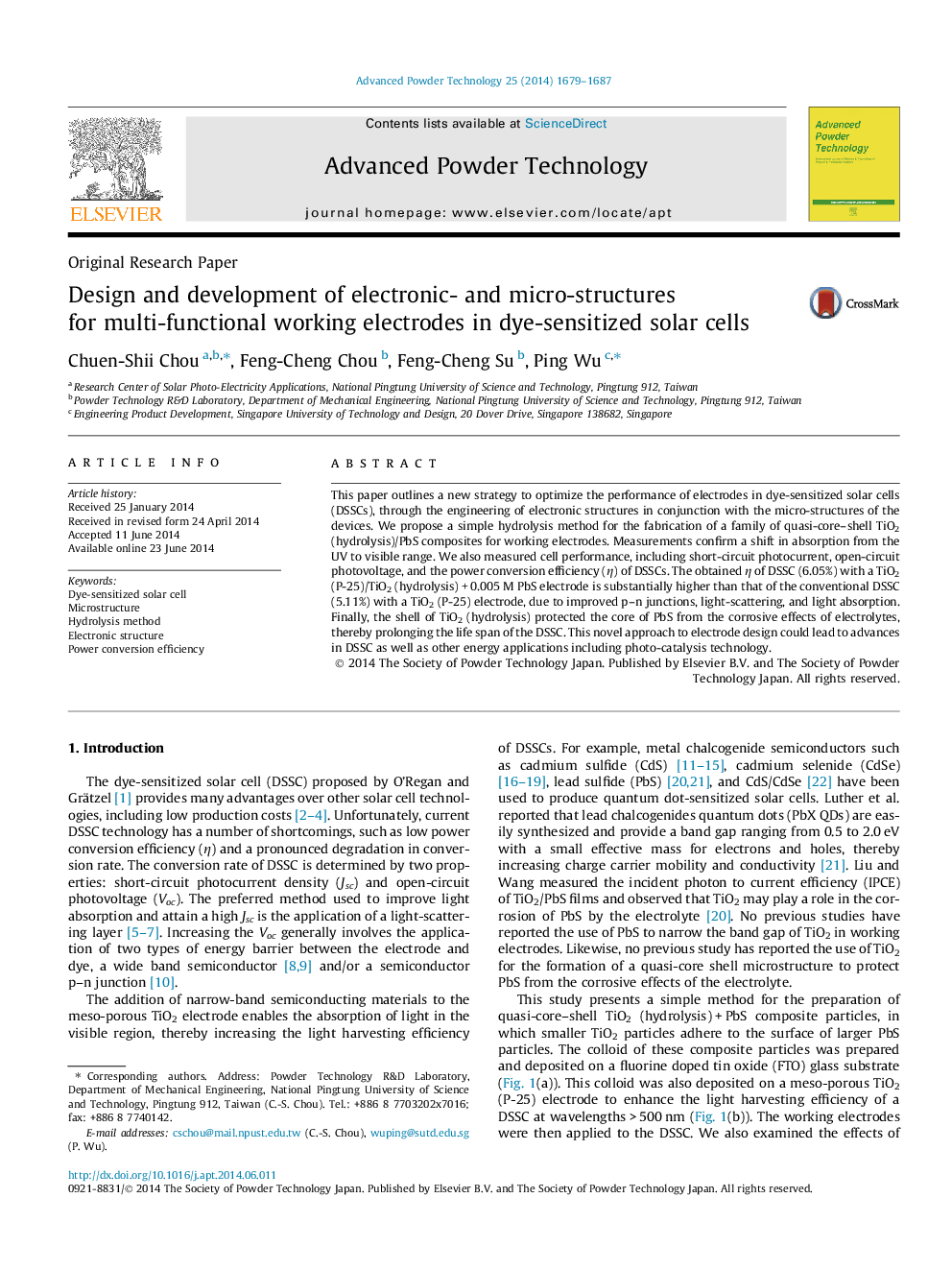| Article ID | Journal | Published Year | Pages | File Type |
|---|---|---|---|---|
| 144165 | Advanced Powder Technology | 2014 | 9 Pages |
•Using a simple hydrolysis method, TiO2 (hydrolysis) + PbS composite particles were prepared.•New electrode with multi-functions was developed by tailoring its electronic- and micro-structures simultaneously.•DSSC [TiO2 (P-25)/TiO2 (hydrolysis) + PbS] has 6.05% efficiency due to light-scattering and p–n junction.•The shell of TiO2 (hydrolysis) could prevent the core of PbS from corrosion by electrolytes.
This paper outlines a new strategy to optimize the performance of electrodes in dye-sensitized solar cells (DSSCs), through the engineering of electronic structures in conjunction with the micro-structures of the devices. We propose a simple hydrolysis method for the fabrication of a family of quasi-core–shell TiO2 (hydrolysis)/PbS composites for working electrodes. Measurements confirm a shift in absorption from the UV to visible range. We also measured cell performance, including short-circuit photocurrent, open-circuit photovoltage, and the power conversion efficiency (η) of DSSCs. The obtained η of DSSC (6.05%) with a TiO2 (P-25)/TiO2 (hydrolysis) + 0.005 M PbS electrode is substantially higher than that of the conventional DSSC (5.11%) with a TiO2 (P-25) electrode, due to improved p–n junctions, light-scattering, and light absorption. Finally, the shell of TiO2 (hydrolysis) protected the core of PbS from the corrosive effects of electrolytes, thereby prolonging the life span of the DSSC. This novel approach to electrode design could lead to advances in DSSC as well as other energy applications including photo-catalysis technology.
Graphical abstractThe power conversion efficiency of the DSSC [with a TiO2 (P-25)/TiO2 (hydrolysis) + 0.005 M PbS electrode] (6.05%) exceeds that of the conventional DSSC [with a TiO2 (P-25) electrode] (5.11%) due to the effects of the p–n junction of PbS-TiO2 and the light-scattering in the DSSC. Furthermore, the quasi-core–shell microstructure of TiO2 (hydrolysis) + PbS enables the slowdown of degradation in cell performance.Figure optionsDownload full-size imageDownload as PowerPoint slide
